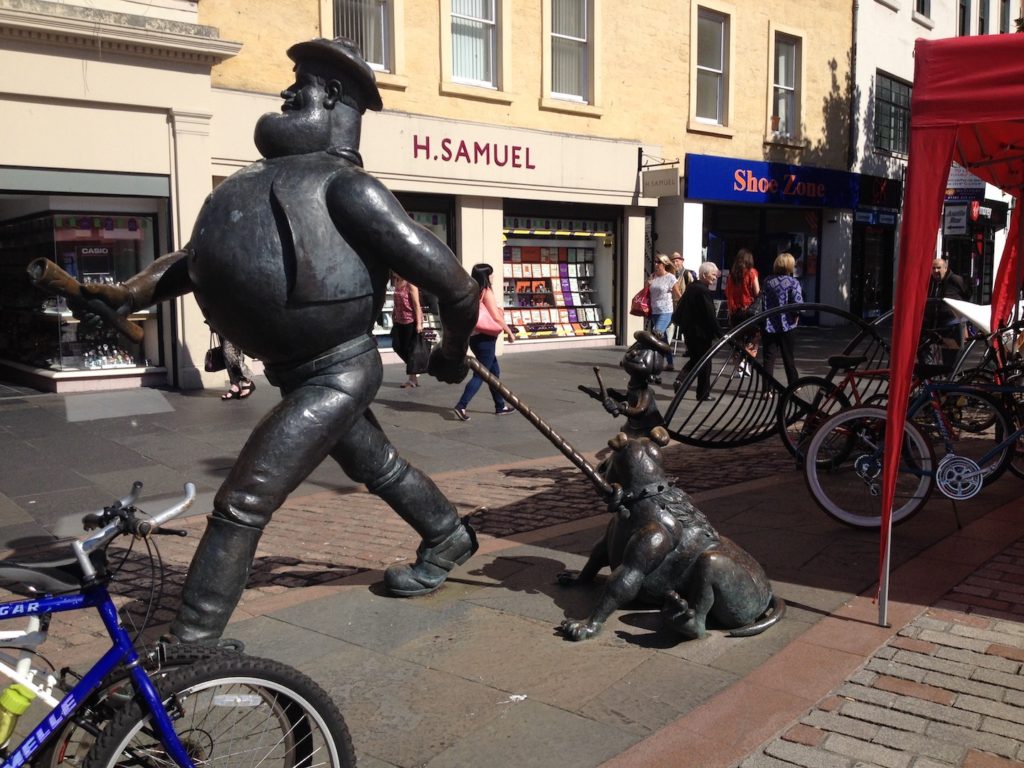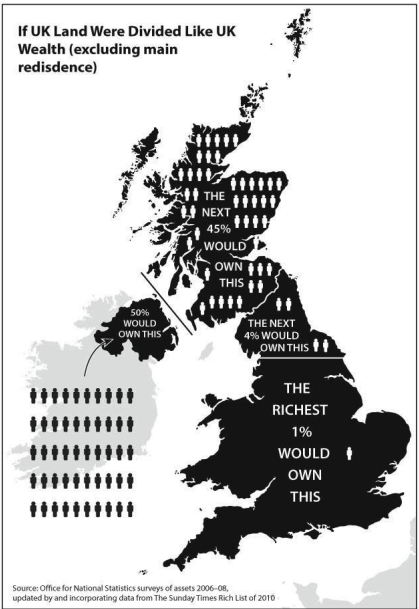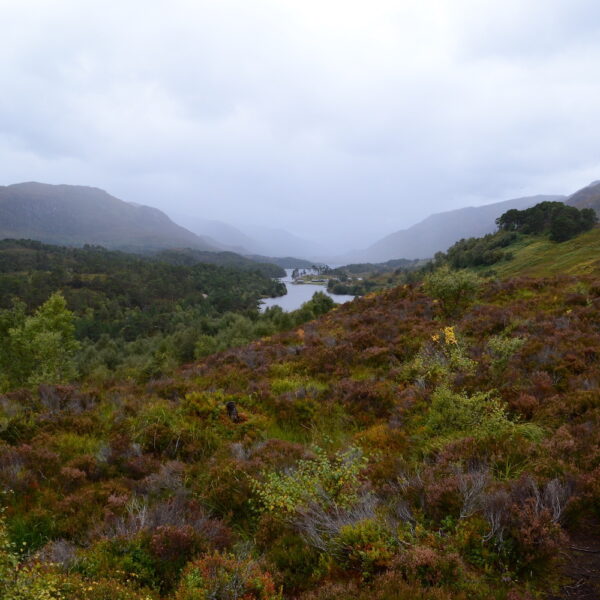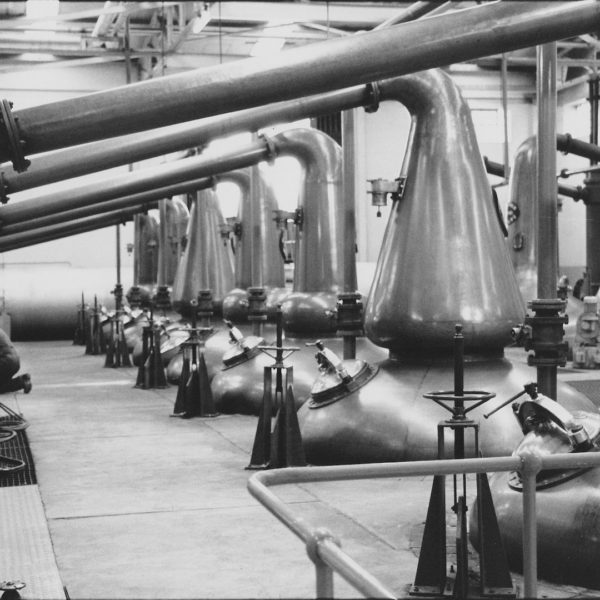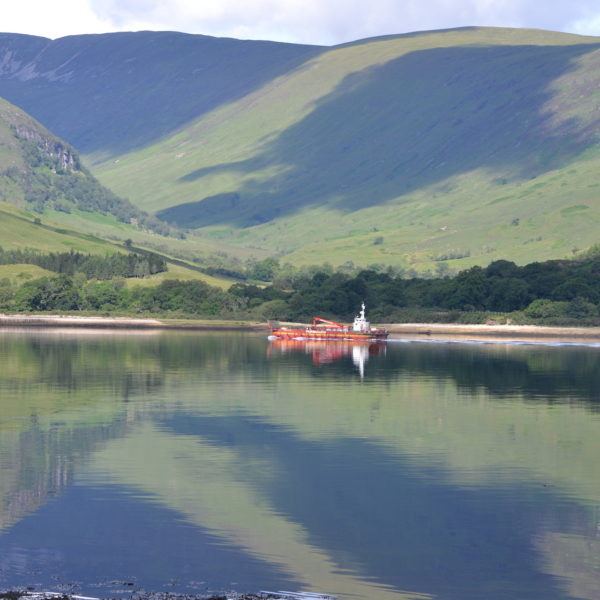My Scotland
My ideal Scotland is an independent state. My Scotland is a republic, free of the monarchy and the aristocracy it supports.
My Scotland is a parliamentary democracy with a constitution that hardwires ideals of equality and social justice into the way the country operates. My Scotland is a country where the bastions of privilege and inequality—the private schools, the large country estates, the obscene salaries and bonuses of corporate bosses—have been dismantled and the proceeds made available to the people. My Scotland is clean, green and no longer a fighting machine. No nuclear weapons, no foreign adventures (e.g. Iraq, Afghanistan) except as part of UN peacekeeping. The Irish Army is the model. My Scotland utilises its abundant natural resources—sun, wind, water and tides—to create renewable energy and wind down its dependence on fossil fuels. My Scotland—well, I think you get the picture.
In the Scottish version of an old joke, a visitor to a Highland village stops a local and asks, ‘How do I get to Aberdeen from here?’ The local ponders a moment, then answers, ‘Och, if I were going to Aberdeen, I wouldna start from here!’
Indeed, to get to my ideal Scotland, you wouldn’t start from here.
And yet, and yet … the 2014 independence referendum, while delivering a No result, prompted an upsurge of community organisation and an engagement in political discussion not seen since the dark days of Thatcherism. Why, when it seemed like Yes might surge over the line, even the London-based press got interested for a wee while.
Passions ran high and allegations of trickery and misinformation were levelled against the Better Together group while the BBC was accused of bias. When it came to the 2015 UK General Election, the Liberal Democrats were deeply tarnished by their coalition with the Conservatives and the imposition of a program of ‘austerity’, while the spectacle of Labour leader Ed Milliband and former leader Gordon Brown campaigning alongside the Conservatives during the independence referendum proved too much for many Scottish Labour voters. Support for Labour and the LibDems collapsed—Labour lost 40 of its 41 seats and the LibDems 10 of 11—and the SNP swept an unprecedented 56 of the 59 Scottish Westminster seats.
While Scots voters sick of the same old politics had a release value in the shape of the SNP, voters in England fed up with their lot and looking for someone to blame were easy prey for the nasty messaging of the anti-immigration UKIP and the right wing of the Tory party. To appease the Eurosceptics, Cameron rolled the dice on another referendum. The anti-EU sentiment of the Leave campaign, riddled with lies and misinformation and fanned by the English popular press, saw the shock 2016 referendum result now known as Brexit.
So, in the two referenda of the twenty-tens, Scotland voted to stay in the UK (and by implication the EU) by 55-45 per cent, and then voted to stay in the EU (62-38 per cent). Scotland’s preference to stay in the EU is therefore clear, yet she is being dragged out of Europe by an unholy alliance of old, white, little Englanders and an increasingly impotent English working class that either swallowed the line that the problems of Britain were caused by European immigration, or simply wanted to lash out at the establishment.
As John Kay put it in the Financial Times in June 2016: ‘The great achievement of the SNP … has been to be a party of protest and a party of government at the same time. This is an achievement Brexiteers will find hard to emulate.’
And so it has proved. Cameron fell on his sword following a second successive referendum misjudgement. The new PM Theresa May attempted to shore up support for a ‘hard’ Brexit by foisting a snap election on an electorate weary of politics and ended up in June 2017 with a hung parliament. Since then the UK government has been flailing about, looking for a way to stop people coming from the continent while keeping goods and services flowing. Europeans meanwhile look on with a mixture of bemusement and contempt.
‘The great achievement of the SNP … has been to be a party of protest and a party of government at the same time. This is an achievement Brexiteers will find hard to emulate.’
In Scotland, the uncertainty caused by Brexit contributed to a slip in support for the SNP in the June 2017 election. While it still won a majority of seats (35 of 59) it lost 21 seats to the unionist parties (Conservative, Labour and LibDems). The appetite for independence has also slightly receded, with 39 per cent indicating a preference for Yes in an opinion poll taken in the week after the election.
A second referendum on independence is still the SNP policy, but First Minister Nicola Sturgeon has hit the pause button on timing, saying she wanted to give people a choice at the end of the Brexit process when ‘clarity has emerged’ about how the move will impact Scotland and the UK.
Do the arguments for independence still stack up? I’m no economist, but it was the economic arguments that persuaded many to vote No in 2014. In this regard I find Professor John Kay’s analysis illuminating.
In his essay ‘Is Recent Economic History A Help?’ Kay concluded that despite the difficulty of isolating Scottish economic indicators from the UK as a whole, there was nothing to indicate that Scotland would not be viable as an independent state.
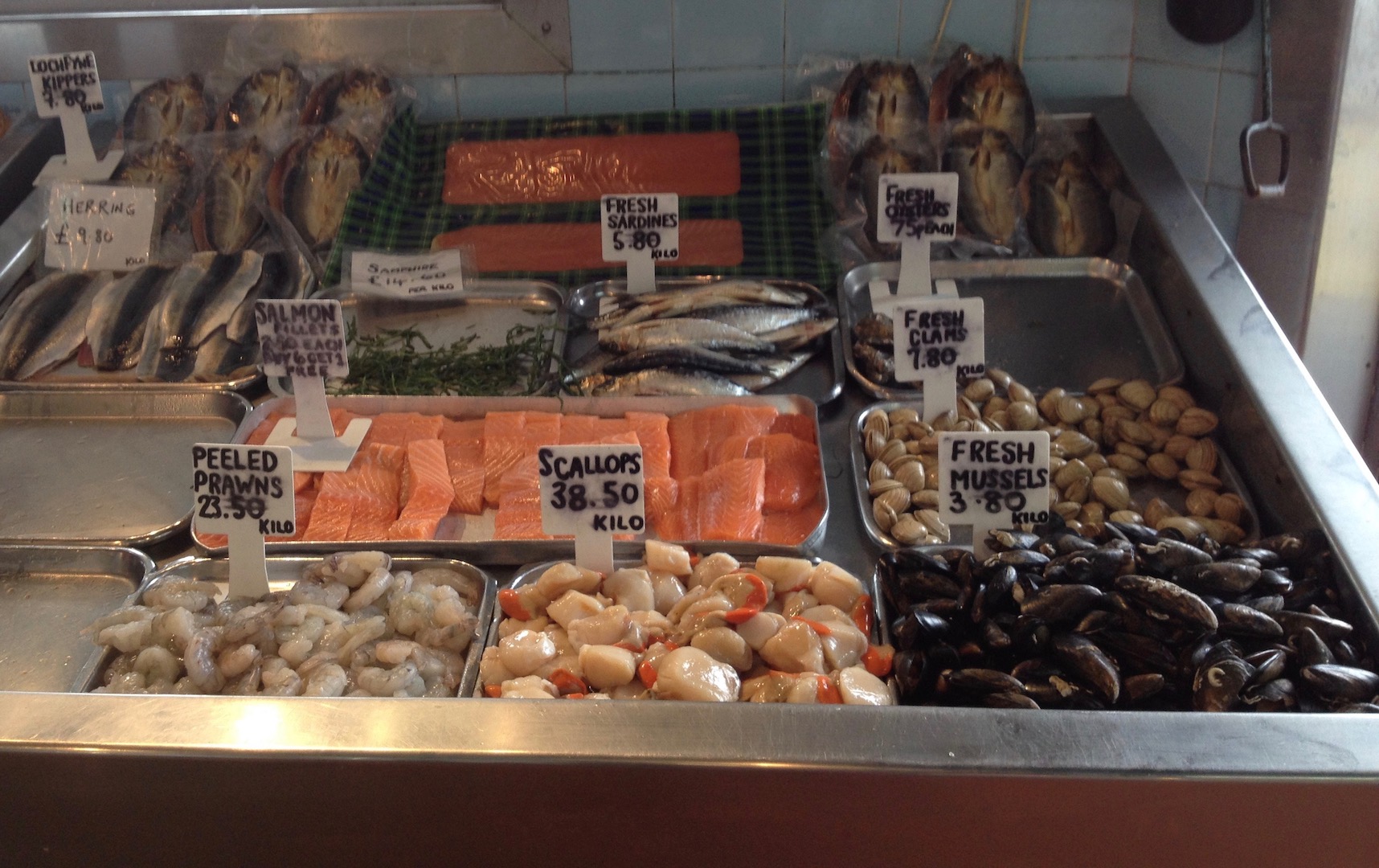 Fresh Scottish seafood on the south side of Glasgow
Fresh Scottish seafood on the south side of Glasgow
Scotland has competitive advantages in the areas of oil and gas services and financial services, Kay wrote. Food and drink (including whisky as discussed elsewhere) and tourism have real competitive advantages but fall short of their potential. He sees hope for the life sciences sector, building on the reputation of Scottish medical schools.
A major problem has been the loss of business headquarters function. This has significant implications for entrepreneurship, which he identifies as an important determinant of Scotland’s growth prospects.
While levels of public expenditure in Scotland have generally been slightly above UK levels, they are not high by European standards and Kay says it is far from clear that Scotland gets value for money from what is spent. Infrastructure overall is in poor shape, transport spending has been inadequate and misdirected he says, while social housing is ‘dire’, resulting in ‘some of the most serious pockets of urban deprivation in Europe’.
While it will be up to the SNP and independence supporters to make a case when the Brexit outcome is known and a new referendum is scheduled, to my mind there is no doubt about the toxic impact of inequality and austerity on the life of the Scottish and British people.
It seems clear to me that over the past ten years, a massive confidence trick has been perpetrated on the UK public. Firstly, the British chapter of 2008’s global financial crisis was blamed on the social policies of the ruling Labour Party, rather than the reckless behaviour of the banks. I recall my absolute astonishment when I first heard this referred to a couple of years ago. It is living proof that if you repeat a lie often and strongly enough and it is not seriously challenged, it becomes a truth.
The GFC led to the state bail out of the Royal Bank of Scotland and a number of other financial institutions. Estimates vary as to the cost of this and one quickly descends into the netherworld of lies, damned lies and statistics. However in December 2009, the UK National Audit Office said government support for the banking sector had reached £850 billion.
The Independent broke this down as follows: ‘The commitments include buying £76bn of shares in Royal Bank of Scotland and the Lloyds Banking Group; indemnifying the Bank of England against losses incurred in providing more than £200bn of liquidity support; guaranteeing up to £250bn of wholesale borrowing by banks to strengthen liquidity; providing £40bn of loans and other funding to Bradford & Bingley and the Financial Services Compensation Scheme; and insurance cover of over £280bn for bank assets.’
In December 2009, the UK National Audit Office said government support for the banking sector had reached £850 billion.
Discounting guarantees, the government spent ‘more than £136.6 billion rescuing some of Britain’s biggest high street lenders’ at the height of the financial crisis, Reuters said in November 2016. But it has so far only managed to recoup just over half that money and the additional interest on the debt used to buy the holdings keeps increasing, threatening a bigger overall loss. Reuters said the government was facing an almost £27 billion loss on the rescue exercise after a slump in the lenders’ value since Britain’s vote to leave the EU.
Yet, the financial sector has become so entrenched within the establishment that runs the UK, that rather than penalise bankers, impose tougher financial regulation and aim to trim the deficit by increasing taxes on the rich, the Conservative-Liberal Democrat government elected in 2010 turned its attention to the poorest in society. Its policy of austerity consisted of sustained reductions in public spending, intended to reduce the budget deficit and the size of the welfare state.
In his book Inequality and the 1% (Verso 2014), Danny Dorling, Professor of Geography at Oxford University, says that while there are complex measures of inequality, such as the Gini coefficient (cue eye glazing), concentrating on the share taken by the 1 per cent may be one of the best measures of inequality given how simple a target it can be for effective social policy.
Dorling’s book details how the impact of the richest 1 per cent distorts and penalises the rest of British society. ‘It is through their actions, the influence of their corporations and the politicians they support that the top one per cent in the UK fuel growing income inequality between themselves and everyone else,’ he writes, ‘leaving so many with so little because a few think they must have so much.’
Comparing a number of industrialised countries, Dorling notes the price of the top 1 per cent is rarely below 5 per cent. Taking this as ‘the price of capitalism’, he identifies, Japan, the Netherlands, Sweden and Switzerland as countries where inequality is relatively low. In the UK the top 1 per cent taken 15 per cent of the income (the US is even worse at 20 per cent).
Unsurprisingly, many of the most highly paid executives are bankers. Dorling writes that in 2011, ‘some 2436 bankers in the UK took home the equivalent of one million euros in pay and bonuses. A third of them worked for Barclays Bank. The number of those high paid bankers in Germany in 2011 was 170, in France it was 162, while in may other European countries in was zero.’
Inequality in the UK in terms of liquid wealth (excluding principal place of residence) is even greater than inequality of income. The top 1 per cent holds 53 per cent of UK liquid wealth, the next 4 per cent 10 per cent and the next 45 per cent hold 31 per cent. The bottom half hold just 6 per cent (source: UK Office of National Statistics).
Dorling’s opening chapter contains an infographic that loads this data onto a map of the UK. The most startling feature is what I will call the Morecambe-Bridlington Line. If you draw a horizontal line between the seaside resort of Morecambe in Lancashire (74 km north of Liverpool) and the Yorkshire town of Bridlington on the east coast, then all the area of England and Wales below that line is equivalent to the proportion of liquid wealth held by the top 1 per cent. The next 4 per cent have everything north of the line up to the Scottish border. The next 45 per cent have Scotland. The bottom 50 per cent? They have Northern Ireland.
If you draw a line between Morecambe and Bridlington, the area of England and Wales below the line is equivalent to the proportion of liquid wealth held by the top 1 per cent.
But inequality is more than just economics, Dorling argues. It is the culture that divides and makes social mobility so painful. The bulk of his book is devoted to showing how the top 1 per cent school their children, how they are rewarded for the work they do, how they amass wealth and the effect all of this has on the rest of the population. Finally he looks at how inequality impacts health, self-worth and the ability to participate in society.
He concludes that among the top 0.01 per cent are those who believe inequality is good, the poor deserve to be poor because they do not have it in them to be any better and the rich are worth their riches. How, you may ask yourself, did this group get the UK in such a tight grip?
Inequality in the UK dropped steadily and consistently from the end of the First World War and reached its lowest point in the late 1970s. Since then it has steadily increased. This is no accident according to British journalist and commentator Owen Jones. In his book The Establishment—And how they get away with it (Penguin 2014), he outlines how power and wealth in the UK have been taken away from the broader population over the past three decades and systematically redistributed to those at the top. It’s an illuminating read.


